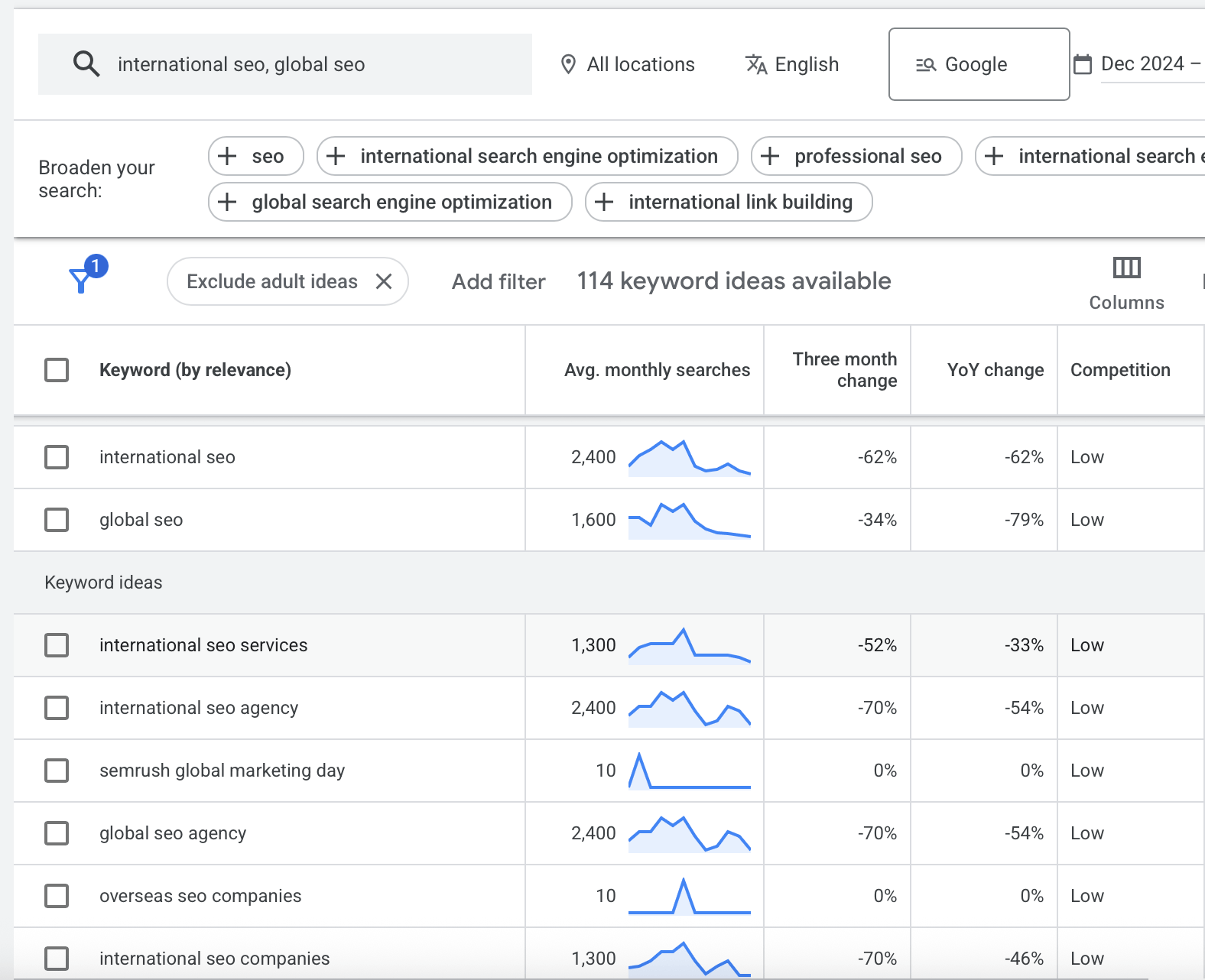If you’re targeting customers in France, getting cheap hosting from the US makes zero sense. Yet this is exactly what many businesses do when they think “going global” just means translating their website.
International SEO and local SEO share one common goal: getting your site in front of the right people. But that’s where the similarities end. The strategies, technical requirements, and challenges are completely different.
The Core Difference: It’s All About Your Customer
Local SEO: One Area, One Focus
Local SEO targets a specific geographic area like a city or neighborhood. If you run a coffee shop in Brooklyn, you want people searching for “best coffee near me” in Brooklyn to find you. Simple.
International SEO: Multiple Markets, Multiple Challenges
International SEO targets multiple countries or regions. You’re not just optimizing for one language or one location, you’re building a presence across different markets, each with unique languages, search behaviors, and expectations.
The most important thing? Your content needs to speak to your target audience in their language, load fast from their location, and feel relevant to their market.

When a “Local Business” Actually Needs International SEO
Here’s a case that surprised us: a plumber in Brixton, London. You’d think this is the definition of a local business, right? Someone needs their toilet fixed, they search “plumber near me,” job done. Pure local SEO.
Wrong.
Here’s what actually happens. This plumber’s real customers aren’t just people living in Brixton. They’re property owners who live all over the world, renting out homes in Brixton. When a tenant reports a plumbing issue, the landlord searches for “plumber in Brixton” from wherever they actually are: Manchester, Paris, Dubai, New York, Singapore.
These searches come from everywhere. If the plumber’s website is hosted on a cheap UK server and takes 4 seconds to load in Dubai or the US, those landlords move on to the next result. They don’t wait. They’re managing a problem from 5,000 miles away and need answers now.
So this “local business” actually needs international SEO infrastructure. The business operates locally, but the customers searching for it are global.
Which Local Businesses Actually Need International SEO?
This pattern applies to more local businesses than you’d think:
- Property management services in tourist cities
- Contractors in areas with high foreign property investment
- Specialized repair services in expat-heavy neighborhoods
- Local suppliers serving international businesses
Not every local business needs this. Your neighborhood coffee shop? Pure local SEO. But if your local business serves customers who search from other countries, you have an international SEO problem disguised as a local one.
The key question: where are your customers when they search for you? If the answer is “all over the world,” your website better load fast everywhere.
Why Speed and Infrastructure Matter More Than You Think
The Translation Myth
Here’s where most businesses get it wrong: they think international SEO is just about translating content and adding some hreflang tags. Wrong.
If you’re targeting users in the UK, France, or Japan, but your server is in Virginia, you’ve already lost. Your TTFB (Time to First Byte) will be terrible, users will bounce, and search engines will notice.
The Real Problem: Distance Kills Speed
Think about it: if it takes 3 seconds for your server to respond to a user in Tokyo because your origin server is halfway around the world, no amount of “SEO optimization” will fix that. Page speed is a ranking factor, and it directly impacts user experience.
This is where infrastructure becomes critical. Traditional hosting models force you to choose one location for your origin server. But your customers aren’t in one location, they’re global. You need infrastructure that delivers content fast everywhere, not just where your server happens to be.
How Modern Infrastructure Solves This
At Globaliser, we solved this with a push-based CDN that replicates your entire WordPress site to edge locations worldwide. Unlike traditional pull-based CDNs that only cache static assets and still hit your origin server for dynamic content, our approach eliminates origin server bottlenecks completely. Result? Consistently low TTFB globally, not just in one region.
Technical Requirements That Actually Matter
The technical setup for international SEO vs local SEO is night and day. Here’s what you actually need to focus on for each.
International SEO Must-Haves:
Website structure: You need to decide between ccTLDs (example.fr, example.de), subdomains (fr.example.com), or subdirectories (example.com/fr/). Each has trade-offs in SEO authority distribution and maintenance complexity.
Hreflang tags: These tell search engines which language/region version of your page to show to which users. Mess this up, and you’ll have duplicate content issues or show French content to German users.
Content localization: This isn’t just translation. Your keyword research, content tone, examples, and even pricing need to match local expectations. What works in the US might flop in Germany.
Global performance: Your site needs to load fast from everywhere. This means edge caching, optimized server locations, and infrastructure that doesn’t force all requests through one origin server.
Backlinks from target markets: Links from .fr domains for your French version, .de domains for German, etc. Search engines use geographic relevance as a trust signal.
Local SEO Must-Haves:
Google My Business: Your primary weapon. Keep it updated with accurate hours, photos, and responses to reviews.
NAP consistency: Your Name, Address, Phone number must be identical everywhere online, from your website to directory listings to social profiles.
Local citations: Getting listed in local directories, chambers of commerce, and industry-specific platforms.
Local content: Blog posts about neighborhood events, local landmarks, community involvement. Show search engines you’re genuinely part of the community.
Mobile optimization: Local searches happen on mobile. “Near me” queries need quick answers.
The Local SEO Naming Trap
Here’s a mistake that costs businesses later: locking yourself into location-specific branding too early.
You start as “Brooklyn Plumbing Services” with the domain brooklynplumbing.com. Great for local SEO in Brooklyn. Then you expand to Queens. Now what? Your domain name says Brooklyn, your business name says Brooklyn, and all your citations and reviews are under “Brooklyn Plumbing Services.”
Changing your business name destroys local SEO momentum. Your NAP consistency is gone. Your reviews are under the old name. Your citations need updating everywhere. Google My Business gets confused. You basically start over.
Generic names have their own problem: “Best Plumbing” or “Quality Home Services” are nearly impossible to rank without proper trademark registration. You’re competing with every generic business name out there, and local directories can’t distinguish you from the dozens of other “Quality” services.
The lesson? If there’s any chance you’ll expand geographically, choose a brand name that isn’t location-locked from day one. And if you go generic, get that trademark filed immediately.
A Note on Multilingual Content
The Multilingual Misconception
People assume only international SEO needs multilingual content. Not true. Local SEO can absolutely require multiple languages if your local market is multilingual. A business in Miami serving both English and Spanish speakers needs hreflang tags too. A shop in Montreal needs both English and French versions.
What’s the Real Difference?
The difference is scope. Local multilingual SEO targets different language speakers in the same geographic area. International multilingual SEO targets different countries and cultures.
Keyword Research: Global Scale vs. Hyper-Local

The way you approach keywords changes completely depending on your scope.
International Keyword Strategy
For international SEO, you’re researching keywords in multiple languages and understanding how search behavior differs by market. “Trainers” in the UK means something different than in the US. Search volume, competition, and user intent vary wildly across countries.
Local Keyword Strategy
For local SEO, you’re going hyper-local: “emergency dentist downtown Chicago,” “best tacos near Lincoln Park.” You’re competing with other local businesses, not global brands. Search volumes are lower, but conversion intent is often higher.
What This Means for Your Business
The Bottom Line
International SEO requires thinking about infrastructure, performance, localization, and market-specific strategies at scale. If you’re serious about global reach, you can’t slap a translation on your site, throw it on cheap US hosting, and expect results.
Local SEO is about dominating your specific geographic area through community engagement, local signals, and proximity optimization.
Both require speed. Both require relevance. But the execution is entirely different.
Test Your Global Performance
Want to see how fast your international site can really be? Try a global TTFB test and see where your infrastructure is letting you down. Because in international SEO, slow is expensive, and fast is everything.







